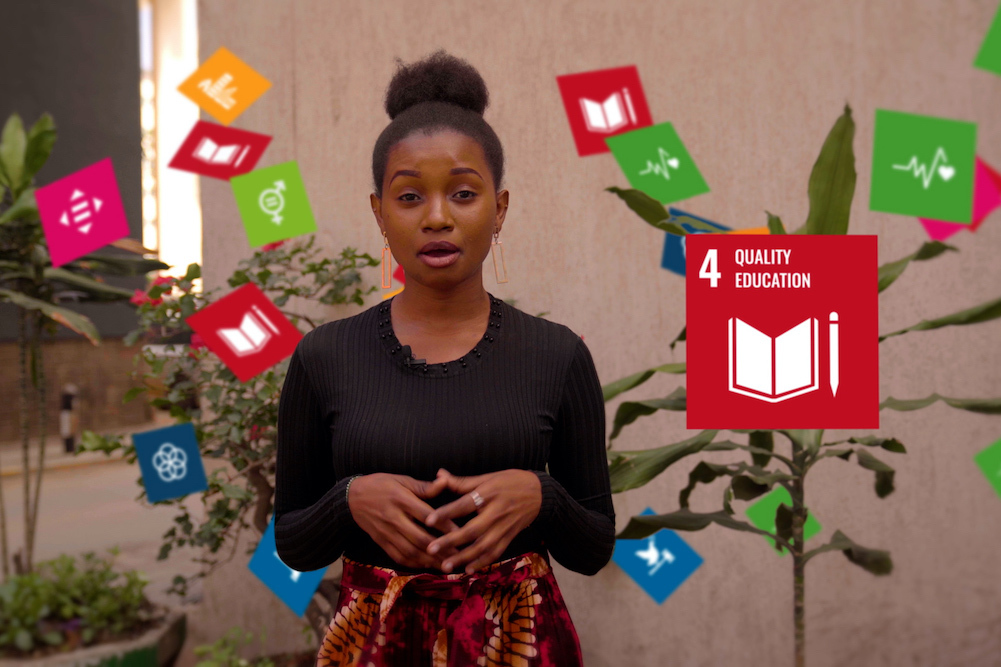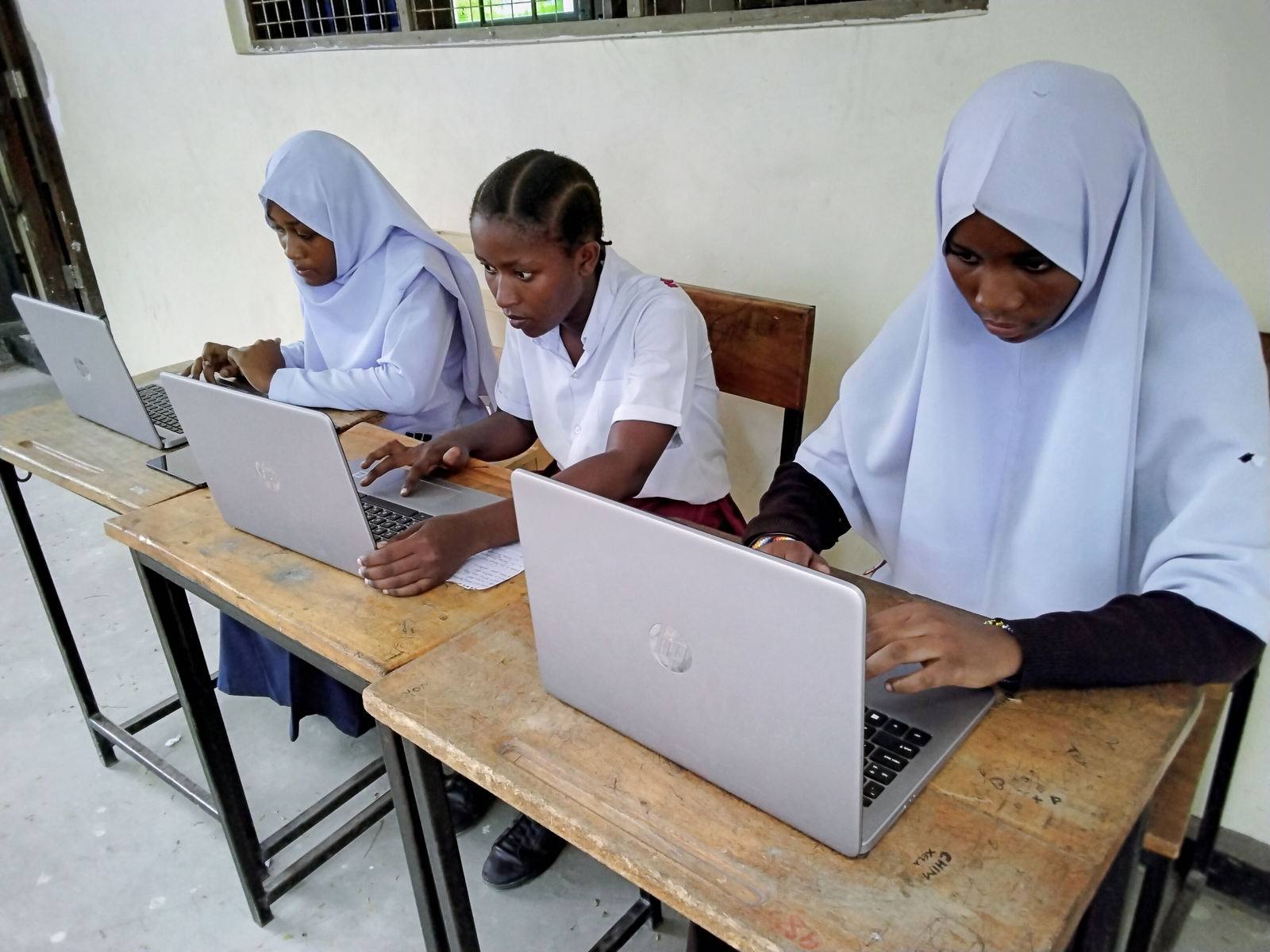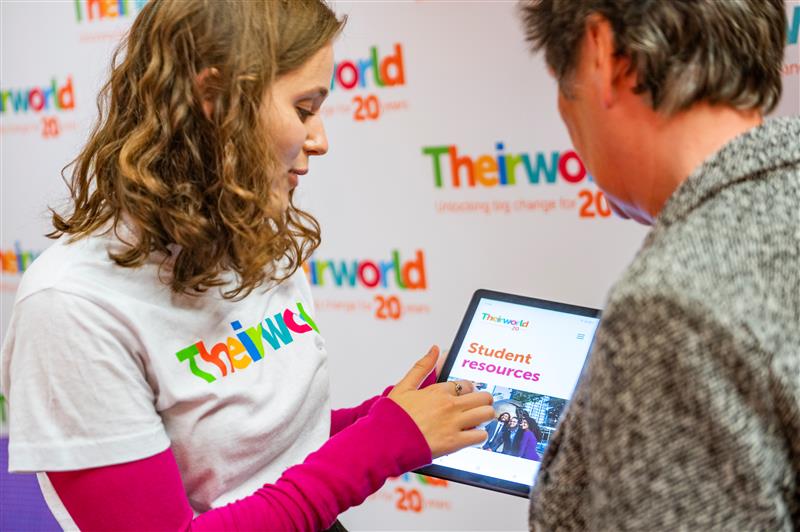
Are we hitting the target in the countdown to 2030 goals on education?
Barriers to education, Early childhood development, Girls' education, Right to education, Sustainable Development Goals, Teachers and learning, Technology and education, United Nations General Assembly
With the second anniversary of the Sustainable Development Goals looming, we look at some of the facts behind the push for education and learning for everyone.
Fifteen years sounds like a long time. But it flies by pretty quickly when you’re trying to improve the lives of billions of people around the world.
It’s now three years since the Sustainable Development Goals were agreed at the United Nations and almost two years since they came into force in January 2016. The SDGs are the set of global aims that world leaders agreed to achieve by the year 2030.
There are 17 goals and the fourth one – or SDG4 as it’s commonly known – is all about education and learning. The exact wording is: “Ensure inclusive and quality education for all and promote lifelong learning.”
Within that goal are 10 separate targets – covering areas such as pre-primary education, equality, youth skills, teachers and facilities.
As we head towards that second anniversary in January, a report by UNESCO – the lead agency on SDG4 – looked specifically at how progress on those targets is being measured. Accountability in Education: meeting our commitments is very technical and there are dozens of tables and hundreds of figures crammed into its 484 pages.
Theirworld recently took an overview of the report, which says everyone has a responsibility for ensuring improvements to education.
Outgoing UNESCO Director-General Irina Bokova said: “Education is a shared responsibility between us all – governments, schools, teachers, parents and private actors. Accountability for these responsibilities defines the way teachers teach, students learn, and governments act.”
Within the findings – part of the Global Education Monitoring Report 2017-18 series – are some fascinating, startling and troubling facts. We have revisited the report today to look at a couple of the key messages from each of SDG4’s 10 targets.
Target 1. All girls and boys to get quality primary and secondary education, which is free and fair.
There were 264 million primary and secondary age children and youth out of school in 2015 – 61 million of primary school age (9% of the age group), 62 million of lower secondary school age (16%), and 141 million of upper secondary school age (37%).
The UNESCO Institute for Statistics estimates that 387 million children of primary school age, or 56%, did not reach the minimum proficiency level in reading. In sub-Saharan Africa 87% of children did not reach this level.
Target 2. All girls and boys to get quality early years care and pre-primary education so they’re ready for primary school.
Just 33% of countries legally stipulate at least one year of free early childhood education – 21% have one year of compulsory and 17% have one year free and compulsory.
Stimulating home environments are important for child development. In Benin, Honduras, Swaziland and many other countries, less than half of children have adults engaging with them in activities to promote learning such as telling stories, singing, playing or drawing.
Target 3. All women and men to have equal access to affordable and quality technical, vocational and tertiary education.
More women than men graduate from tertiary education but fewer women obtain STEM (science, technology, engineering and mathematics) degrees. In Chile, Ghana and Switzerland, women account for less than one-quarter of these degrees.
Very few adults who have not completed primary education go back to school. In Mozambique, just 20% of adults had completed primary but only 0.5% were enrolled in formal adult education. However, in some upper middle income countries, such as Brazil and Thailand, adult enrolment is above 4%.
Target 4. Many more youth and adults to learn relevant skills for employment, decent jobs and entrepreneurship.
Most adults in low and middle income countries do not have even basic computer skills. In 2014–2016, only 4% of adults in Sudan and Zimbabwe could copy and paste a file. In Egypt, Iran, Jamaica and Pakistan, 2% to 4% could use basic arithmetic formulas in a spreadsheet.
A review of 20 low and middle income countries showed that six had never had any regulatory mechanism for non-government training provision and nine had never had a functioning information system to improve system performance.
Target 5. Children will not miss out on education and vocational training because they are female, have a disability, are members of an indigenous people or are in an an emergency situation.
While there is overall gender parity in education participation, global averages mask huge gaps between countries. Only 66% of nations have achieved gender parity in primary education, 45% in lower secondary and 25% in upper secondary.
Wealth disparity at all education levels remains large. While the global lower secondary completion rate is 69%, only 12% of the poorest males and 8% of the poorest females complete.
Target 6. All youth and a large proportion of adults to have literacy and numeracy skills.
The number of youth with no literacy skills has fallen by 27% since 2000, although more than 100 million young people still cannot read, including more than one in four in sub-Saharan Africa.
Insufficient use of local languages in instruction is one possible reason for low literacy in sub-Saharan Africa. In systems that concentrated on local languages, 69% of adults with five years of education could read a sentence, compared with 41% of adults educated partly or wholly in colonial languages.
Target 7. All learners to become global citizens who appreciate cultural diversity and have the knowledge and skills to contribute to sustainable development, human rights, gender equality and a culture of peace.
A 48-country review found that almost 80% had supportive policies for sexuality education but they were not always implemented. Programmes addressing gender relations are five times likelier to reduce sexually transmitted disease rates than those that do not.
Almost 30% of 15-year-olds in 2015 performed below the minimum proficiency level on the science domains of earth and space systems. In Estonia and Japan, at least 90% of students achieved that level compared to less than 50% in Brazil, the Dominican Republic, Peru, Qatar and Tunisia.
Target 8. Education facilities to be built and upgraded so they are suitable for all children including girls and children with disabilities, and are safe, inclusive places to learn.
In half of 148 countries, less than three-quarters of primary schools had access to drinking water. In Mexico, 19% of the poorest grade three students, but 84% of the richest, attended schools with adequate water and sanitation.
In sub-Saharan Africa, only 22% of primary schools have electricity. Disparity within countries on access to technology can be large. The percentage of computers connected to the internet is twice as high in city schools as in rural areas in Colombia and the Dominican Republic.
Target 9. By 2020 have many more scholarships to enable people from developing countries to go into higher education and vocational training in other countries.
In 2015, 4.6 million tertiary education students – 2% of the total – studied abroad. While this rate has remained constant, the percentage of those studying outside their home region increased from 57% in 2000 to 63% in 2015.
Scholarship spending is underestimated as many countries, including Brazil, China and India, do not include it in their aid programmes.
Target 10. The number of qualified teachers to grow substantially, supported by international co-operation for teacher training in developing countries.
Globally, 86% of primary school teachers are trained but the proportion is lower in Southern Asia (77%), the Caribbean (70%) and sub-Saharan Africa (62%).
Information on teacher salaries and attrition rates is scarce. In OECD countries, primary school teachers earn 81% of what other full-time working professionals with tertiary education earn.

More news

Skills for the future give young people the best chance of success
